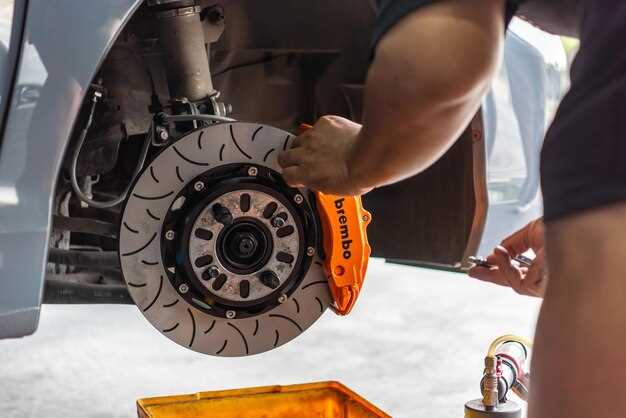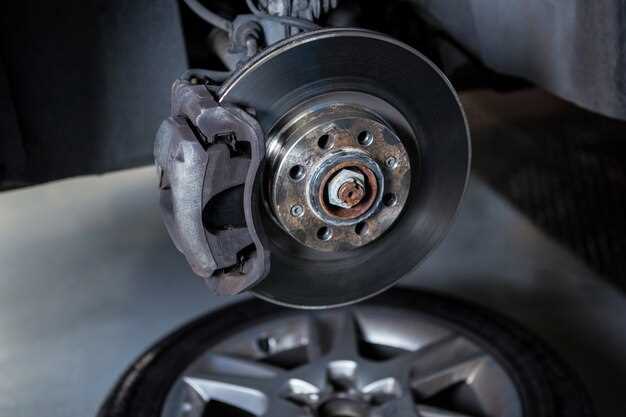
When it comes to enhancing the performance of your Dodge Charger, choosing the right brake kit is crucial. The braking system plays a vital role in ensuring your vehicle stops effectively, providing not only safety but also improving overall driving dynamics. With a plethora of options available on the market, making the right choice can be a daunting task.
A quality brake kit can significantly improve stopping power, reduce brake fade, and enhance the responsiveness of your Charger. It is essential to consider factors such as the type of driving you do, your Charger’s engine specifications, and whether you prioritize daily driving comfort or high-performance capabilities. Selecting the appropriate materials, such as ceramic or metallic compounds, can also influence the longevity and effectiveness of your braking system.
In this article, we will guide you through the key aspects to consider when selecting a brake kit for your Charger. From understanding the different components of a brake kit to evaluating your specific driving needs, we aim to equip you with the knowledge necessary to make an informed decision. Join us as we delve into the world of brake kits and help you find the perfect match for your Dodge Charger.
Understanding the Types of Brake Kits Available for Your Charger
When it comes to enhancing your Charger’s braking performance, selecting the right brake kit is essential. Various types of brake kits are available on the market, each designed to meet different driving needs and preferences. Understanding these options can help you make an informed choice for replacement and performance upgrades.
The most common types of brake kits include basic replacement kits, performance kits, and big brake kits. Basic replacement kits typically include brake pads and rotors that are direct factory replacements. These kits are ideal for daily drivers who require reliable stopping power without any modifications to existing components.
Performance brake kits, on the other hand, are designed to offer improved braking efficiency and heat dissipation. They often include high-performance brake pads, slotted or drilled rotors, and sometimes upgraded calipers. These kits are perfect for enthusiasts looking to achieve maximum performance on both the street and the track.
For those seeking a substantial upgrade, big brake kits provide significantly larger rotors and calipers. This type of kit is engineered to enhance stopping power and reduce fade during extreme driving conditions. Big brake kits are ideal for Charger owners who frequently engage in spirited driving or track events.
Finally, it’s important to consider the material composition of the components within these kits. Premium materials like ceramic and carbon composite tend to offer better performance, durability, and less dust compared to standard materials. Choosing a brake kit that features high-quality components is crucial for ensuring safe and effective braking.
In summary, understanding the various types of brake kits available for your Charger is key to enhancing its braking capabilities. Whether opting for basic replacements, performance enhancement, or high-performance big brake kits, selecting the right kit will greatly impact your driving experience.
Key Factors to Consider When Selecting a Replacement Brake Kit

When choosing a replacement brake kit for your Charger, several key factors should be evaluated to ensure optimal performance and safety. First, assess the type of brake pads included in the kit. Options range from organic to ceramic and metallic pads, each providing different levels of performance, noise, and dust characteristics. Consider your driving style and preferences to select the most suitable material.
Next, take into account the size and type of rotors. Larger rotors generally provide better heat dissipation and improved stopping power. Additionally, check whether the rotors are slotted or drilled, as these designs can enhance braking efficiency by reducing the likelihood of brake fade under heavy use.
Compatibility with your vehicle is crucial. Ensure that the replacement brake kit is designed specifically for your Charger model. Mismatched components can lead to inadequate braking performance and potential safety hazards. Always verify that the specifications align with your car’s requirements.
Another important consideration is the quality of the components in the brake kit. Higher-quality kits often utilize advanced materials and manufacturing processes, which can translate to increased durability, better performance, and a longer service life. Research reputable brands and look for reviews to gauge the reliability of the brake kits you are considering.
Pricing is also a factor, but it should not be the only consideration. While a lower price may be tempting, it often compromises quality and safety. Aim for a balance between cost and quality to ensure you invest in a kit that meets your needs without breaking the bank.
Lastly, consider the ease of installation. Some kits come as complete packages with all necessary hardware, while others may require additional components for a successful installation. Evaluate your mechanical skills and determine whether you will need professional assistance.
Installation Tips and Maintenance for Your New Brake Kit

Installing a new brake kit for your Charger can significantly enhance your vehicle’s performance. However, proper installation and maintenance are crucial to ensure optimal functionality and longevity. Before starting the replacement process, gather all necessary tools including a socket set, torque wrench, and brake cleaner. It is also advisable to have a vehicle lift or jack stands for accessibility.
Begin by thoroughly reading the installation instructions provided with your brake kit. Each kit may have specific requirements, and following the manufacturer’s guidelines helps prevent issues. When removing the old brake components, take care to inspect the brake lines and hardware for any signs of wear or damage. Replace any damaged parts to maintain the integrity of the braking system.
During installation, ensure that all components are clean and free from grease or dirt. Use brake cleaner to wipe down the brake calipers and rotors. Proper alignment of the new brake pads and rotors is essential for effective braking performance. After replacing the components, torque the bolts to the manufacturer’s specifications to avoid future complications.
Once installed, it’s crucial to break in the new brake kit properly. This often involves a series of controlled stops to allow the pads and rotors to mate correctly. Refer to the brake kit’s instructions for specific bedding procedures to enhance performance and extend the life of the brake components.
Regular maintenance is key to ensuring the longevity of your new brake kit. Periodically check the brake fluid level and replace it as necessary, ensuring the fluid is of good quality and free from contaminants. Additionally, inspect the brake pads and rotors for wear every few thousand miles. If you notice any uneven wear or unusual noises while braking, address these issues promptly to prevent further damage.
Furthermore, consider replacing brake components in pairs, such as rotors and pads, to maintain balanced braking performance. Regularly cleaning the braking system can also prevent grime buildup, which affects overall performance. By following these installation tips and maintenance recommendations, you will ensure your brake kit operates effectively and safely for years to come.




